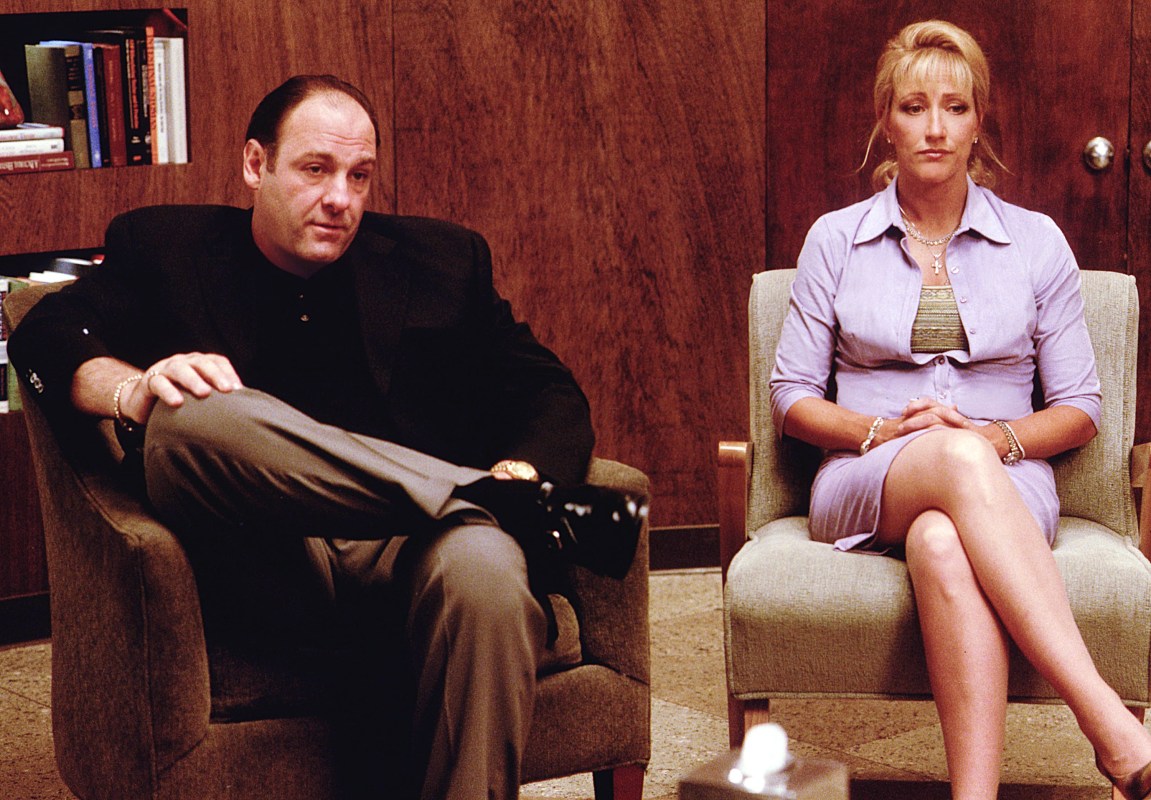In Season 1, Episode 13 of The Sopranos, psychiatrist Dr. Jennifer Melfi explains to Tony that his mother, Livia, tried to have him killed. The mob boss does not take this well: he flips a glass table and threatens to break Melfi’s face into “50,000 pieces.” Like most entertainment, this scene represents an extreme example of real life. Most people who’ve gone to therapy experience a range of emotions, and anger and aggression are not off the (glass) table.
While you hopefully wouldn’t want to threaten your therapist, the urge to yell at them is not only understandable, but it may be a symptom of what got you into their office in the first place.
There is some evidence that men with depression and anxiety disproportionately experience aggression compared to their depressed and anxious female counterparts. Researchers suggest this is because boys are socialized to avoid other forms of emotional expression, like crying. So it would make sense that when men finally do seek out the help of a mental health professional, they might come in a little hot.
However, therapists like Reuben Brody, a licensed clinical social worker associate, acknowledge that these gender norms have shifted in the last 20 years. [Editor’s note: Brody was an employee of InsideHook until 2018.]
“People assume that the only emotion that boys are allowed to experience growing up is anger,” Brody tells me. However, the impulse to convert unpleasant emotions, such as sadness, into energizing ones, like anger, is common, genderless and largely tied to our childhoods.
“Somebody might have just grown up in a house where you had to get loud in order to be heard,” Brody says. If the only way to be heard as a child was to yell, then it makes sense why someone would associate yelling with getting what they want, and why it may feel good to repeat that behavior throughout their lives. “Having a space to work that out and learn skills to address the anger is the role of therapy,” Brody explains. “So, is it appropriate to yell? Sure.”
Unlike going off on a customer service representative or significant other, yelling can be helpful in a therapeutic context. Still, the difference between productive yelling and the kind that will prematurely end your session depends on a variety of factors, including what you’re yelling about, body language and a therapist’s comfort level.
When Yelling Is Productive
When yelling occurs in therapy, it is often a sign of “transference.” Transference is the phenomenon of unconsciously projecting unresolved emotions onto someone else, like your therapist. Brody says that with a skilled therapist, this type of transference can be useful.
“Say you had a parent who did not attend to your emotional needs, and you’re angry at that parent,” Brody explains. There can be a lot of shame or other unresolved emotions that come along with that, and these may be transferred onto the therapist. The difference is, he says, that “the therapist doesn’t get up and leave. They stay there with you in it, and then they help you resolve that in the moment.”
When a therapist rides these tense moments of transference out with a client, there’s a chance they’ll get yelled at. When this happens in a session, responding in a calm or soft way can sometimes make people more agitated, so Brody prefers to match that energy and try to lower it from there.
“Seeing that somebody’s getting in there with them is a way to really help them work through it,” Brody says. “We don’t want to be alone, and anger, depression, all of this, especially when it’s intense, it’s very isolating.”
In other words, you can totally yell at your therapist, but don’t be surprised if they raise their voice back. But a therapist’s role goes beyond that. To help people self-regulate and refrain from bringing their anger outside of a therapeutic environment, clinicians can provide individuals with tools that they can use between sessions.
Wheels and Windows
One resource Brody likes to utilize is the “Wheel of Awareness,” a grounding technique developed by renowned psychiatrist Dr. Dan Siegel. Through relaxation exercises like checking in with your five senses (sometimes known as the 5-4-3-2-1 method), conducting a body scan, meditation, journaling, breathwork, and other healthy activities that distract from anger, people who struggle with anger and aggression can expand their “Window of Tolerance.”
Siegel describes this window as the ideal mental state in which individuals can effectively cope with stress. While a bad night’s sleep or a stressful day of decision-making at work can close this window, leading to a state of hyperarousal where people are more prone to anger, the Wheel of Awareness aims to prevent people from slipping into fight-or-flight mode by increasing emotional regulation through psycho-education and self-awareness.
When Yelling Ends a Session
Although yelling can be beneficial in a therapeutic setting, a co-pay doesn’t give people free rein to verbally attack mental health professionals. This kind of outburst is more common when someone isn’t in therapy by choice — for example, when their time there is court-ordered or pushed by a partner or employer.
Brody notes that if a client were displaying threatening body language, such as standing over him or getting in his face, and verbal de-escalation techniques failed, he would question their intent. “Are they trying to threaten you, or are they just really angry?” If it felt like a deliberate threat, Brody would end the session.
That said, he acknowledges that, as a middle-aged man, he comes from a unique place of privilege when it comes to handling aggression. (It’s estimated that over 75% of therapists in the U.S. are women.) “What’s appropriate might change from person to person.”
Every Therapist Is Different
Therapists are trained to field transference, set boundaries if yelling escalates and end sessions when clients are unable to communicate within these parameters. Every therapist is different, and by extension, their tolerance for yelling will vary. However, as Brody points out, beyond assessing their safety and whether their client poses a danger to themselves and others, there aren’t many catch-all rules on how to handle aggression in therapy.
Instead, Brody calls on a strategy a fellow therapist taught him: the “no technique technique.” Basically, therapists rely on their intuition as much as their education to provide individualized care. Even in The Sopranos — albeit an extreme and fictional example — Melfi admits that she’s throwing out her normal toolkit before dropping a bomb on Tony. (It just happens to blow up in her face.)
In reality, a lot of people who struggle with anger and aggression stand to gain a lot from yelling at, or sometimes with, their therapists. And in the best-case scenario, your therapist might be able to steer you towards what you’re actually mad about.
More Like This
The Charge will help you move better, think clearer and stay in the game longer. Subscribe to our wellness newsletter today.


